52 papers:
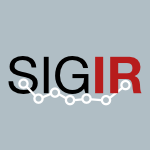 SIGIR-2015-EswaranBP #classification #modelling #scalability #topic
SIGIR-2015-EswaranBP #classification #modelling #scalability #topic- Modeling Website Topic Cohesion at Scale to Improve Webpage Classification (DE, PNB, JJPI), pp. 787–790.
 SAC-2015-AlemerienM #metric #named #predict #usability #user interface #visual notation
SAC-2015-AlemerienM #metric #named #predict #usability #user interface #visual notation- SLC: a visual cohesion metric to predict the usability of graphical user interfaces (KA, KM), pp. 1526–1533.
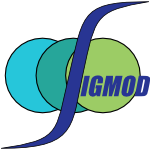 SIGMOD-2014-ShaoCC #detection #parallel #performance
SIGMOD-2014-ShaoCC #detection #parallel #performance- Efficient cohesive subgraphs detection in parallel (YS, LC, BC), pp. 613–624.
 KDIR-2014-HaraSOM #automation #information management #towards
KDIR-2014-HaraSOM #automation #information management #towards- Annotating Cohesive Statements of Anatomical Knowledge Toward Semi-automated Information Extraction (KH, IS, KO, IM), pp. 342–347.
 MLDM-2014-JoshiB #named #novel
MLDM-2014-JoshiB #named #novel- CBOF: Cohesiveness-Based Outlier Factor A Novel Definition of Outlier-ness (VJ, RB), pp. 175–189.
 SEKE-2013-JulianoTSM #assessment #automation #case study #complexity #similarity
SEKE-2013-JulianoTSM #assessment #automation #case study #complexity #similarity- Automated Computation of Use Cases Similarity can Aid the Assessment of Cohesion and Complexity of Classes (S) (RCJ, BANT, MSS, MdAM), pp. 494–499.
 VLDB-2013-ZhaoT12 #analysis #network #scalability #social #visual notation
VLDB-2013-ZhaoT12 #analysis #network #scalability #social #visual notation- Large Scale Cohesive Subgraphs Discovery for Social Network Visual Analysis (FZ, AKHT), pp. 85–96.
 FASE-2012-BarrBRHGD #branch #development
FASE-2012-BarrBRHGD #branch #development- Cohesive and Isolated Development with Branches (ETB, CB, PCR, AH, DMG, PTD), pp. 316–331.
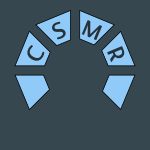 CSMR-2012-YoshidaKI #approach #functional #maintenance #metric #source code
CSMR-2012-YoshidaKI #approach #functional #maintenance #metric #source code- A Cohesion Metric Approach to Dividing Source Code into Functional Segments to Improve Maintainability (NY, MK, HI), pp. 365–370.
 ICPC-2012-SilvaSCG #metric
ICPC-2012-SilvaSCG #metric- Concern-based cohesion: Unveiling a hidden dimension of cohesion measurement (BCdS, CS, CC, AG), pp. 103–112.
 CSCW-2011-SchwandaBLSVH
CSCW-2011-SchwandaBLSVH- Temporal patterns of cohesiveness in virtual groups (VS, KB, JL, GS, AV, JTH), pp. 709–712.
 OCSC-2011-GamberiniMSBF #feedback #network #process #quote #social
OCSC-2011-GamberiniMSBF #feedback #network #process #quote #social- “Your Team Cohesion is Low”: A Systematic Study of the Effects of Social Network Feedback on Mediated Activity (LG, FM, AS, RB, MF), pp. 172–181.
 ICSE-2011-ApelB #case study #product line
ICSE-2011-ApelB #case study #product line- Feature cohesion in software product lines: an exploratory study (SA, DB), pp. 421–430.
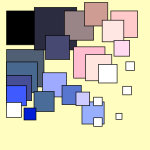 SCAM-2010-UjhaziFPG #concept #metric #object-oriented
SCAM-2010-UjhaziFPG #concept #metric #object-oriented- New Conceptual Coupling and Cohesion Metrics for Object-Oriented Systems (BU, RF, DP, TG), pp. 33–42.
 SAC-2010-ChowdhuryZ #complexity #metric #question
SAC-2010-ChowdhuryZ #complexity #metric #question- Can complexity, coupling, and cohesion metrics be used as early indicators of vulnerabilities? (IC, MZ), pp. 1963–1969.
 CSMR-2009-JoshiJ #concept analysis
CSMR-2009-JoshiJ #concept analysis- Concept Analysis for Class Cohesion (PJ, RKJ), pp. 237–240.
 ICSM-2009-LiuPFGC #modelling #topic
ICSM-2009-LiuPFGC #modelling #topic- Modeling class cohesion as mixtures of latent topics (YL, DP, RF, TG, NC), pp. 233–242.
 CASE-2008-Balasundaram #graph #mining
CASE-2008-Balasundaram #graph #mining- Cohesive subgroup model for graph-based text mining (BB), pp. 989–994.
 DocEng-2008-GoncalvesRV #towards
DocEng-2008-GoncalvesRV #towards- Summarizing and referring: towards cohesive extracts (PNG, LHMR, RV), pp. 253–256.
 SIGMOD-2008-WangPTT #mining #named #visualisation
SIGMOD-2008-WangPTT #mining #named #visualisation- CSV: visualizing and mining cohesive subgraphs (NW, SP, KLT, AKHT), pp. 445–458.
 ICSM-2008-LuciaOV #metric #semantics #using
ICSM-2008-LuciaOV #metric #semantics #using- Using structural and semantic metrics to improve class cohesion (ADL, RO, LV), pp. 27–36.
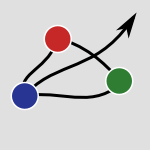 HT-2007-ChinC #hypermedia #identification #social #using
HT-2007-ChinC #hypermedia #identification #social #using- Identifying subcommunities using cohesive subgroups in social hypertext (AC, MHC), pp. 175–178.
 SCAM-2007-Krinke #metric #visualisation
SCAM-2007-Krinke #metric #visualisation- Statement-Level Cohesion Metrics and their Visualization (JK), pp. 37–48.
 HCI-IPT-2007-LeeC #design #interface #visual notation
HCI-IPT-2007-LeeC #design #interface #visual notation- Interface Design Technique Considering Visual Cohesion-Rate by Object Unit (CML, OBC), pp. 72–81.
 OCSC-2007-HuL #named #social
OCSC-2007-HuL #named #social- PixelWish: Collective Wish-Making and Social Cohesion (CH, SMSL), pp. 80–85.
 MSR-2006-GuiS #component #evaluation #metric #reuse
MSR-2006-GuiS #component #evaluation #metric #reuse- Coupling and cohesion measures for evaluation of component reusability (GG, PDS), pp. 18–21.
 SAC-2006-NemalhabibS #algorithm #category theory #clustering #dataset #named
SAC-2006-NemalhabibS #algorithm #category theory #clustering #dataset #named- CLUC: a natural clustering algorithm for categorical datasets based on cohesion (AN, NS), pp. 637–638.
 ICSM-2005-MarcusP #concept
ICSM-2005-MarcusP #concept- The Conceptual Cohesion of Classes (AM, DP), pp. 133–142.
 SCAM-2005-CounsellST #comprehension #empirical #object-oriented
SCAM-2005-CounsellST #comprehension #empirical #object-oriented- Object-oriented cohesion as a surrogate of software comprehension: an empirical study (SC, SS, AT), pp. 161–172.
 SEKE-2005-ZhouL #approach #diagrams
SEKE-2005-ZhouL #approach #diagrams- Measuring Class Cohesion: A Causality Diagram Based Approach (YZ, HKNL), pp. 767–771.
 FASE-2004-ZhaoX #aspect-oriented
FASE-2004-ZhaoX #aspect-oriented- Measuring Aspect Cohesion (JZ, BX), pp. 54–68.
 WCRE-2004-BoisDV #named #refactoring
WCRE-2004-BoisDV #named #refactoring- Refactoring — Improving Coupling and Cohesion of Existing Code (BDB, SD, JV), pp. 144–151.
 WCRE-2004-MeyersB #metric
WCRE-2004-MeyersB #metric- Slice-Based Cohesion Metrics and Software Intervention (TMM, DB), pp. 256–265.
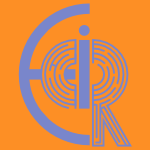 ECIR-2004-StokesNCS #analysis #using
ECIR-2004-StokesNCS #analysis #using- Broadcast News Gisting Using Lexical Cohesion Analysis (NS, EN, JC, AFS), pp. 209–222.
 TOOLS-USA-2003-BadriB04 #empirical
TOOLS-USA-2003-BadriB04 #empirical- A Proposal of a New Class Cohesion Criterion: An Empirical Study (LB, MB), pp. 145–159.
 SIGAda-2003-XuCZ #ada
SIGAda-2003-XuCZ #ada- Measuring cohesion of packages in Ada95 (BX, ZC, JZ), pp. 62–67.
 ICSM-2002-ChenZBZY #analysis #approach #dependence #novel
ICSM-2002-ChenZBZY #analysis #approach #dependence #novel- A Novel Approach to Measuring Class Cohesion Based on Dependence Analysis (ZC, YZ, BX, JZ, HY), pp. 377–384.
 ICSM-2002-ZhouBZY #named
ICSM-2002-ZhouBZY #named- ICBMC: An Improved Cohesion Measure for Classes (YZ, BX, JZ, HY), pp. 44–53.
 IWPC-2002-CounsellMS #comprehension #empirical #object-oriented
IWPC-2002-CounsellMS #comprehension #empirical #object-oriented- Comprehension of Object-Oriented Software Cohesion: The Empirical Quagmire (SC, EM, SS), pp. 33–42.
 KDD-2002-LinC #algorithm #clustering #performance #robust #self
KDD-2002-LinC #algorithm #clustering #performance #robust #self- A robust and efficient clustering algorithm based on cohesion self-merging (CRL, MSC), pp. 582–587.
 ASE-2001-GuptaR #metric
ASE-2001-GuptaR #metric- Program Execution-Based Module Cohesion Measurement (NG, PR), p. 144–?.
 CSMR-2001-AbreuG #composition #question
CSMR-2001-AbreuG #composition #question- Coupling and Cohesion as Modularization Drivers: Are We Being Over-Persuaded? (FBeA, MG), pp. 47–57.
 CSMR-2001-KabailiKL #object-oriented
CSMR-2001-KabailiKL #object-oriented- Cohesion as Changeability Indicator in Object-Oriented Systems (HK, RKK, FL), pp. 39–46.
 WCRE-2001-Rilling #comprehension #functional
WCRE-2001-Rilling #comprehension #functional- Maximizing Functional Cohesion of Comprehension Environments by Integrating User and Task Knowledge (JR), pp. 157–165.
 WCRE-1999-LakhotiaD
WCRE-1999-LakhotiaD- Restructuring Functions with Low Cohesion (AL, JCD), pp. 36–46.
 ICSM-1998-OcaC #data mining #identification #mining #using
ICSM-1998-OcaC #data mining #identification #mining #using- Identification of Data Cohesive Subsystems Using Data Mining Techniques (CMdO, DLC), pp. 16–23.
 SEKE-1996-KangB #design #using #visualisation
SEKE-1996-KangB #design #using #visualisation- Using Design Cohesion to Visualize, Quantify, and Restructure Software (BKK, JMB), pp. 222–229.
 CSEE-1994-Zalewski #tool support
CSEE-1994-Zalewski #tool support- Cohesive Use of Commercial Tools in a Classroom (JZ), pp. 65–75.
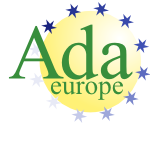 AdaEurope-1993-CherniackDF #ada #source code
AdaEurope-1993-CherniackDF #ada #source code- Tool for Computing Cohesion and Coupling in Ada Programs: DIANA Dependent Part (JRC, HSD, JFF), pp. 180–196.
 ICSE-1993-Lakhotia #approach #rule-based
ICSE-1993-Lakhotia #approach #rule-based- Rule-Based Approach to Computing Module Cohesion (AL), pp. 35–44.
 ICSE-1992-PatelCB
ICSE-1992-PatelCB- A Measure for Composite Module Cohesion (SP, WCC, RB), pp. 38–48.
 ICSE-1989-OttT #slicing
ICSE-1989-OttT #slicing- The Relationship between Slices and Module Cohesion (LMO, JJT), pp. 198–204.
 SIGIR-2015-EswaranBP #classification #modelling #scalability #topic
SIGIR-2015-EswaranBP #classification #modelling #scalability #topic SAC-2015-AlemerienM #metric #named #predict #usability #user interface #visual notation
SAC-2015-AlemerienM #metric #named #predict #usability #user interface #visual notation SIGMOD-2014-ShaoCC #detection #parallel #performance
SIGMOD-2014-ShaoCC #detection #parallel #performance KDIR-2014-HaraSOM #automation #information management #towards
KDIR-2014-HaraSOM #automation #information management #towards MLDM-2014-JoshiB #named #novel
MLDM-2014-JoshiB #named #novel SEKE-2013-JulianoTSM #assessment #automation #case study #complexity #similarity
SEKE-2013-JulianoTSM #assessment #automation #case study #complexity #similarity VLDB-2013-ZhaoT12 #analysis #network #scalability #social #visual notation
VLDB-2013-ZhaoT12 #analysis #network #scalability #social #visual notation FASE-2012-BarrBRHGD #branch #development
FASE-2012-BarrBRHGD #branch #development CSMR-2012-YoshidaKI #approach #functional #maintenance #metric #source code
CSMR-2012-YoshidaKI #approach #functional #maintenance #metric #source code ICPC-2012-SilvaSCG #metric
ICPC-2012-SilvaSCG #metric CSCW-2011-SchwandaBLSVH
CSCW-2011-SchwandaBLSVH OCSC-2011-GamberiniMSBF #feedback #network #process #quote #social
OCSC-2011-GamberiniMSBF #feedback #network #process #quote #social ICSE-2011-ApelB #case study #product line
ICSE-2011-ApelB #case study #product line SCAM-2010-UjhaziFPG #concept #metric #object-oriented
SCAM-2010-UjhaziFPG #concept #metric #object-oriented SAC-2010-ChowdhuryZ #complexity #metric #question
SAC-2010-ChowdhuryZ #complexity #metric #question CSMR-2009-JoshiJ #concept analysis
CSMR-2009-JoshiJ #concept analysis ICSM-2009-LiuPFGC #modelling #topic
ICSM-2009-LiuPFGC #modelling #topic CASE-2008-Balasundaram #graph #mining
CASE-2008-Balasundaram #graph #mining DocEng-2008-GoncalvesRV #towards
DocEng-2008-GoncalvesRV #towards SIGMOD-2008-WangPTT #mining #named #visualisation
SIGMOD-2008-WangPTT #mining #named #visualisation ICSM-2008-LuciaOV #metric #semantics #using
ICSM-2008-LuciaOV #metric #semantics #using HT-2007-ChinC #hypermedia #identification #social #using
HT-2007-ChinC #hypermedia #identification #social #using SCAM-2007-Krinke #metric #visualisation
SCAM-2007-Krinke #metric #visualisation HCI-IPT-2007-LeeC #design #interface #visual notation
HCI-IPT-2007-LeeC #design #interface #visual notation OCSC-2007-HuL #named #social
OCSC-2007-HuL #named #social MSR-2006-GuiS #component #evaluation #metric #reuse
MSR-2006-GuiS #component #evaluation #metric #reuse SAC-2006-NemalhabibS #algorithm #category theory #clustering #dataset #named
SAC-2006-NemalhabibS #algorithm #category theory #clustering #dataset #named ICSM-2005-MarcusP #concept
ICSM-2005-MarcusP #concept SCAM-2005-CounsellST #comprehension #empirical #object-oriented
SCAM-2005-CounsellST #comprehension #empirical #object-oriented SEKE-2005-ZhouL #approach #diagrams
SEKE-2005-ZhouL #approach #diagrams FASE-2004-ZhaoX #aspect-oriented
FASE-2004-ZhaoX #aspect-oriented WCRE-2004-BoisDV #named #refactoring
WCRE-2004-BoisDV #named #refactoring WCRE-2004-MeyersB #metric
WCRE-2004-MeyersB #metric ECIR-2004-StokesNCS #analysis #using
ECIR-2004-StokesNCS #analysis #using TOOLS-USA-2003-BadriB04 #empirical
TOOLS-USA-2003-BadriB04 #empirical SIGAda-2003-XuCZ #ada
SIGAda-2003-XuCZ #ada ICSM-2002-ChenZBZY #analysis #approach #dependence #novel
ICSM-2002-ChenZBZY #analysis #approach #dependence #novel ICSM-2002-ZhouBZY #named
ICSM-2002-ZhouBZY #named IWPC-2002-CounsellMS #comprehension #empirical #object-oriented
IWPC-2002-CounsellMS #comprehension #empirical #object-oriented KDD-2002-LinC #algorithm #clustering #performance #robust #self
KDD-2002-LinC #algorithm #clustering #performance #robust #self ASE-2001-GuptaR #metric
ASE-2001-GuptaR #metric CSMR-2001-AbreuG #composition #question
CSMR-2001-AbreuG #composition #question CSMR-2001-KabailiKL #object-oriented
CSMR-2001-KabailiKL #object-oriented WCRE-2001-Rilling #comprehension #functional
WCRE-2001-Rilling #comprehension #functional WCRE-1999-LakhotiaD
WCRE-1999-LakhotiaD ICSM-1998-OcaC #data mining #identification #mining #using
ICSM-1998-OcaC #data mining #identification #mining #using SEKE-1996-KangB #design #using #visualisation
SEKE-1996-KangB #design #using #visualisation CSEE-1994-Zalewski #tool support
CSEE-1994-Zalewski #tool support AdaEurope-1993-CherniackDF #ada #source code
AdaEurope-1993-CherniackDF #ada #source code ICSE-1993-Lakhotia #approach #rule-based
ICSE-1993-Lakhotia #approach #rule-based ICSE-1992-PatelCB
ICSE-1992-PatelCB ICSE-1989-OttT #slicing
ICSE-1989-OttT #slicing









